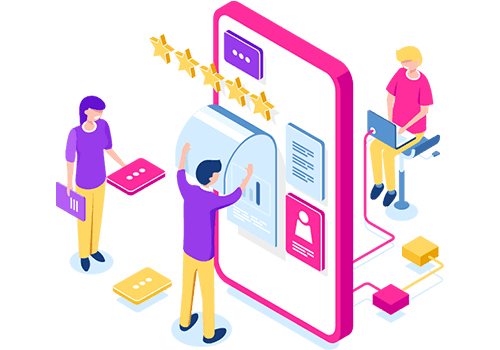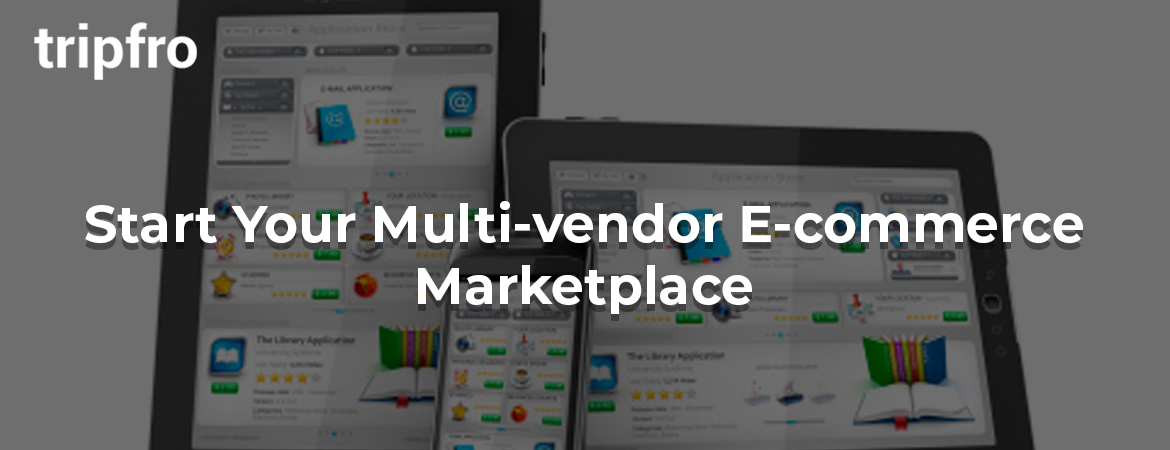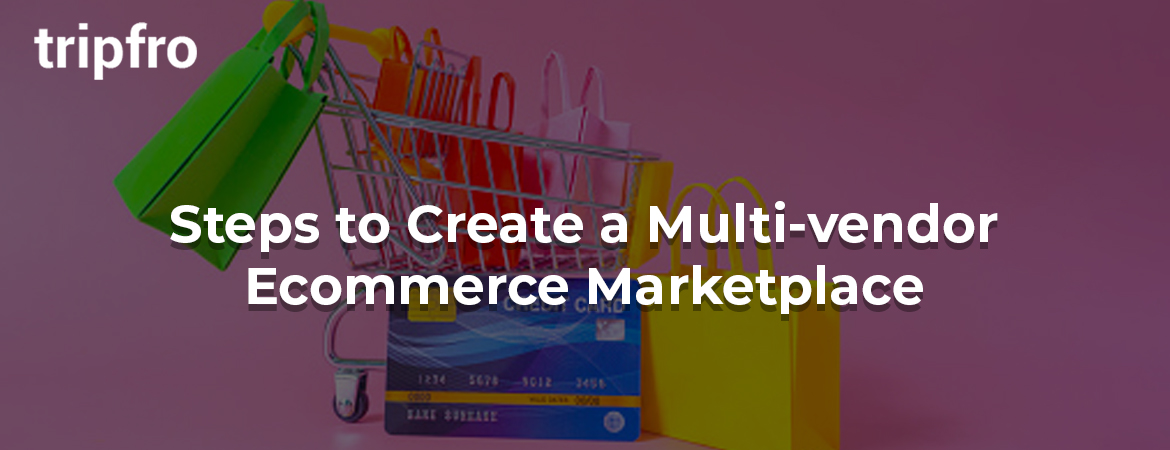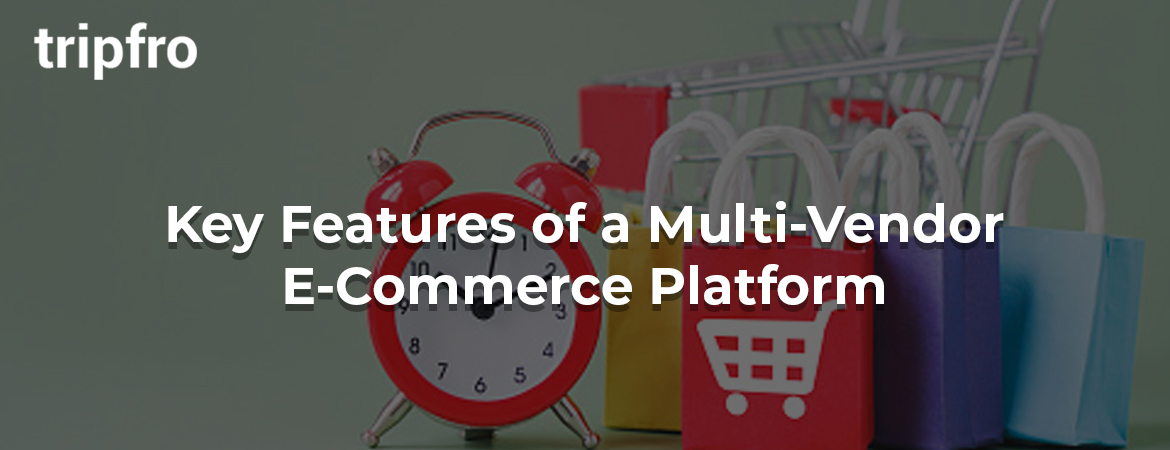Clients and Partners
Trusted by 1000+ companies around the world
Trusted by 1000+ companies around the world

Our service never stops with the sales of our softwares or API Solutions. It goes on in the form of after-sales service since we understand that our products are designed to satisfy your requirements for many years to come.We’ve an established and efficient system in place to deal with all of your after sale support needs.




Every project we take on starts with the aim of being our 'best yet', so you can be assured that our attention to detail and high quality work is present in every job we craft. We want our customers to be as excited and proud of the end product as we are, and we strive towards that goal every day.


Whatever your Business requirement, Tripfro offers completely managed best fit travel technology solution.

 Configure credit limit and deposits
Configure credit limit and deposits Multilingual travel websites
Multilingual travel websites Add offline travel bookings
Add offline travel bookings Distribute white labels
Distribute white labels Dynamic fare caching
Dynamic fare caching Commissions and markup control
Commissions and markup control Advanced Reports
Advanced Reports Manage multiple branches
Manage multiple branches Sub Agents can create and manage multiple branches and users
Sub Agents can create and manage multiple branches and users Optional cross selling platform
Optional cross selling platform SMS gateway
SMS gateway Multi currency transactions for agents and suppliers
Multi currency transactions for agents and suppliers Business intelligence reports
Business intelligence reports Online travel booking engine
Online travel booking engine Multiple sales channels - B2B, B2B2B, B2B2C
Multiple sales channels - B2B, B2B2B, B2B2C Centralised mid-office
Centralised mid-office Ability to connect multiple GDS, LCC, and third party APIs
Ability to connect multiple GDS, LCC, and third party APIs Complete Reservation Management
Complete Reservation Management Travel Agent Management
Travel Agent Management Transactional Accounting
Transactional Accounting Accounting System Integration
Accounting System Integration Comprehensive system to manage rates, discounts and allocation
Comprehensive system to manage rates, discounts and allocation Payment Gateway Integration
Payment Gateway Integration Multiple Supplier APIs
Multiple Supplier APIs Add direct contracts
Add direct contracts Redistribution API
Redistribution API

What is a Multi-vendor eCommerce Marketplace?
A multi-vendor eCommerce marketplace is an eCommerce store that includes several vendors selling their products and services.
Multi-vendor marketplace software comes with powerful features including an easy-to-use interface, simple payment methods, social media integrations, rewards and discounts, ratings and reviews, and more.
Start Your Multi-vendor E-commerce Marketplace
TripFro is a leading multi-vendor eCommerce marketplace software development company, we create fully functional eCommerce multi-vendor marketplace platforms for adding multiple sellers and keeping track of their eCommerce sales.
Our multi-vendor eCommerce marketplace development services cater to eCommerce businesses of all sizes to set up and manage marketplaces quickly, affordably, and efficiently, along with a focus on providing full control over your eCommerce store’s functionality.
Our fully customizable multi-vendor eCommerce solution allows for selling multiple products through a single storefront and customers can add products from different vendors to their single shopping cart. The site admin can set up shipping regulations, modify products in the marketplace, and add new sellers or vendors.
Our expert eCommerce developers build the highly intuitive user interface and user experience that meet your business objectives with its rich feature set.
Enriched with all the necessary features, our multi-vendor marketplace can create various plans for customers and a robust system for managing the payment process for sellers.
Types of Multi-Vendor Marketplaces
Mainly, there are 3 types of online multi-vendor marketplaces.
B2B multi-vendor marketplaces: B2B marketplaces are those where the sellers sell products to other businesses at a wholesale rate. Alibaba or Walmart are the popular B2B multi-vendor marketplaces.
C2C multi-vendor marketplaces: C2C marketplaces are those where customers can sell their products or services directly to other customers. eBay, Taobao is the best examples of C2C marketplaces
B2C multi-vendor marketplaces: B2C multi-vendor marketplace is a platform where various sellers sell their products or services to customers on sale. Amazon or Flipkart are the popular names in the online B2C marketplaces.
How Does a Multi-Vendor eCommerce Marketplace Work?
Basically, a multi-vendor marketplace is a platform for third-party sellers – a big online store containing multiple small shops that are run by individual vendors!
A Multi-Vendor eCommerce marketplace model provides a platform to establish a digital network that facilitates communication between the customers and the sellers.
It works effectively and efficiently with store owners and vendors. Here’s how a multi-vendor marketplace works:
Vendors register with the marketplace either through paid registration or a free one.
After registering, vendors upload their products for users to start purchasing.
Store admin charges a fee on the transactions.
Most of the payments or transactions are made to the store and then to the sellers.
Vendors handle the product delivery.
Communication about faulty products can be conveyed to either of them i.e. the store admin or the vendor.
Steps to Create a Multi-vendor Ecommerce Marketplace

We have seen the benefits of developing an eCommerce development app. If you wish to create your own app, you can hire an experienced mobile app developer to help you. Here, we will give you an overview of the steps involved in creating your own eCommerce marketplace.
1. Identify The Target Audience
Every business must have a target audience in mind. The needs of the customer base will dictate your advertising and marketing campaigns. To find the target audience, your company must carry out a series of surveys.
You can hand out questionnaires, conduct online polls, and other such methods to find out the needs of the users. Using this information, you can design the features of your marketplace app and website.
For instance, you may find results such as users from the ages of 18-25 spending most of their money buying headphone sets. With this information, you can invite tech vendors who sell good-quality headphones.
This way, your company can rise to the ranks of eCommerce solution providers. Once you find the target audience, you can publish your advertising campaigns on platforms that they frequently visit.
2. Create Your Unique Selling Proposition
Your company will face a lot of competition from other eCommerce marketplaces. To combat this, you will need to make your company stand out.
What can you do to make your online marketplace solutions and services unique? For instance, you can provide free delivery, discounts, deals, and offers to attract new customers. This should also answer the question of why people would use your services rather than opting for another company’s services.
A good marketplace development company will help you make sure that you stay updated on the needs of your users. Your services must remain unique and attractive to the users. Once they like your company, it will increase your chances of brand loyalty.
3. Fill In The Gap In The Market
The best way to make your company unique is to make sure that you cover the gaps in existing online marketplace solutions. From the data you gather from your market research, you can identify the unexploited sections of the customer base.
This will help you find ways to get more customers. You can also use this information to invite specific kinds of vendors to your eCommerce marketplace.
4. Setting Up The Marketplace
Now, you have all the information you need to build your own eCommerce marketplace. You can take your ideas to a great marketplace development company to develop the website and app or you see the model of our marketplace.
They will help you design the online platform, choose the necessary features, customize it however you want, and so on. More importantly, they will help you set up a Minimum Viable Product (MVP). An MVP is an app or website that provides the most basic functions to users.
For instance, let’s assume that initially, your marketplace can offer clothing items only. But as it becomes more popular, you can start introducing new products and services.
This is a marketplace app development technique that will help you minimize your losses. If a project is not successful, you will not lose too much money. If it is a success, you can expand on the app or website gradually, while still making profits.
5. Grow The Marketplace
Once the online store has been set up, you have to grow your business to stay ahead of the users and their needs. This means adding new features, studying the changing trends in the market, and so on.
You can hire a multi-vendor marketplace development company to help you find ways to grow your company. Also, you can hire an advertising and marketing team to help you promote the vendors and their products.
Key Features of a Multi-Vendor eCommerce Platform

When you’re making a multi-vendor e-commerce marketplace, you need to consider some important features, mainly with respect to the admin and vendors, but also the users. Let’s take a look at the features required for all three of them.
Key Features for The Admin
Manifold Shopfronts: You don’t need to begin multi-market places from scratch as there are global storefronts market places for countries, vendors as well as product categories. You can just open a new storefront with a demanded language, currency, vendors, products, and manage them all with a single admin panel.
Multi-Level Admin Access: When duties are assigned to the vendors, administering a broad-scale marketplace becomes easier. The multi-vendor platform sets distinct levels of access to the admin panel, with vendor registrations.
Powerful Payment System: A vendor payment management system is very important in the online marketplace. In multi-vendor, the admin can use automatic or manual vendor payouts. With the auto payouts features, vendors can save 90% of their time.
Vendor Subscription Plans: Annual or monthly subscription plans are pliable features that will help you raise your revenue. The plans can help the admin maximize profits by providing vendors with better selling opportunities.
Warehouse Management: This feature will allow the admin to track real-time inventory, add various warehouse locations and manage operations.
Compatible Order Management System: There will be thousands or millions of products on your multi-vendor marketplace. With a good order management system, customers can order multiple products and make a single simple payment instead of buying each product separately. Each vendor can see orders of only their products!
Key Features for the Vendors
Vendor Registration: Your multi-vendor marketplace should provide an easy and hassle-free registration and product listing feature to third-party vendors. They must be able to have an exclusive profile and showcase product listings to their customers.
Vendor Storefront Modification: With this feature, vendors can make their mini store more attractive by building designs. They can modify the fonts, colors, themes, and templates of their store.
Real-time Inventory Updates: Vendors should be able to get real-time inventory updates and receive all the information regarding their orders and stock. This will help them manage their inventory better.
Tax Management: There are different categories of taxes in different regions and this feature will enable vendors to input their correct tax details for the products.
Review & Comments: Customers should be able to post their reviews to help vendors get good credits and customer attraction. If vendors have good reviews, they can generate more income.
Key Features for Users
Multi-Product Order: Users should be able to place the order of different types of products from different vendors, by using the same cart.
Compare Products: Users should be able to view or select multiple products and compare their prices.
Captcha Assistance: Users have the feature to reach the vendors with Captcha Assistance.
Join Marketplace: If any user wants to join the marketplace, they can appeal to the admin to become a vendor.
Things To Keep In Mind While Developing a Marketplace
Developing a Multi-Vendor eCommerce marketplace involves a complex structure as there are a lot of things to consider. Due to its complexity, it is better to leave the development work to a professional and experienced mobile app development company. Let’s look at the things to keep in mind during the development process:
User Experience: There should be easy navigation of products, with a well-defined categorization and an appealing UI and visuals which will lead to a better user experience.
Communication Flow: Pre-decide the flow with the development team, employees, vendors, stakeholders, and customers.
Originality: The concept of the app or the marketplace should be unique and should stand out in order to gain more users. It should not be a straight-out replica.
Set out Pros and Cons: Explore the options, look through all the other applications in the market and make a list of pros and cons. This will help you make a high-end finished product.
Platform: Choose the right platform for app management, based on your budget. Select the best features to meet the future requirements of your users.
To improve the app, you need to provide a personalized shopping experience to the users. Make a strategy of allowing almost any vendor to sell anything using your marketplace.
Apart from these basic factors, there are several technologies and tools which will make your app provide a satisfactory experience to the users. For everything to work out, you need to hire an app development company, experienced in Multi-Vendor eCommerce app development.
Key Aspects of Building an Multi-Vendor Ecommerce Platform
Research and Plan
Before starting the development process, remember that it is necessary to do the market research and plan accordingly.
Start the process by analyzing the customer’s behavior, their needs, and requirements and determine the user’s expectations in regards to the kind of services or products you are trying to sell.
Gather feedback through market research, and then make a plan about budget, MVP, features, and technologies you need.
Choose the Operating System
The next step is to determine whether you want a Native or Cross-Platform operating system. Determine your target audience and see which one they prefer the most.
Understand their geolocation and see the location where android or iOS influences. And lastly, keep in mind that even though iOS apps take less time to develop, android apps have the broadcast reach.
UX/UI Design of the App
App’s design and look is the first thing that attracts users and influences them to spend more time on the app. But if the design is attractive yet complicated and users will not understand or access the app easily, you will lose them.
Therefore, make sure to make the app pleasing-looking with soothing colors, schemes, and visuals but make it easy to access. Focus on – App Prototype Design, UX/UI Design, and Color & Appearance.
Must-Have Features for the App
The features and functionality of your app will determine its success. This means you need to make an app that is easily used and has all the features that a customer needs.
Keep in mind the following features – Registration & Login, Push Notifications, Filters & Search Bars, Real-Time Order Tracking & History, Multiple Payment Options, Easy Checkout, Category Management, Offers & Discounts Management, and Feedback & Support.
There are many other advanced features that you can consider like, AI, Machine Learning, Virtual Assistant, Chatbot, AR, Voice Command, etc.
Final Cost of App Development
Carefully evaluate the cost of the entire process so you can determine a close estimation of the total cost.
As the team includes many experts like a project manager, app developers, designers, etc. you need to consider their per hour or project hiring costs.
Keep in mind that the final cost cannot fully be determined as the needs and requirements change during the development process.
Why Should You Use TripFro to Build Your E-commerce Marketplace?
TripFro is one of the many popular eCommerce development tools used today. It is used by companies across the globe to create their own marketplaces. You can hire TripFro developers to use this software for your company. There are many benefits of using this software.
TripFro is quite scalable and has many features that can help your company create high-performing websites. The customizable themes and tools on this software will help you to provide a seamless customer experience. However, if you are not familiar with the workings of the software, you can hire TripFro developers to help you.
Benefits Of Our Multi-Vendor E-commerce Marketplace
There are many reasons why your company should adopt the latest e-commerce website development trends. We have listed some of them below.
Easy To Set Up
E-commerce marketplaces have a very low setup time and cost. Your company will not need to design the products, take account of the inventory, or worry about shipping costs.
Rather, you can focus on bringing in more good-quality vendors. In this way, you can multiply your profits faster. Your company will only have to hire dedicated developers to create a website and host multiple vendors.
Profitable
Online marketplaces are better eCommerce industry solutions than eCommerce stores. An eCommerce store requires the company to shell out money for software product development, digital marketing, inventory, shipping, and more.
These costs often eat into the income of the company. With eCommerce marketplaces, however, there are no such additional costs. Your company is only responsible for finding vendors and maybe providing the delivery of the products. This immensely increases the profit margin for you.
Convenience
E-commerce marketplaces are very convenient for users. They offer multiple vendors and products under one roof. This way, customers do not have to look too far to find solutions for all their needs.
Such convenience leads to better brand loyalty among users. Your company can also benefit from such eCommerce industry solutions with a higher profit.
Highly Scalable
Hotels
Flight
Forex
Business
Cruise
Buses
Rails
Holidays
Cars
Destination
Sigts
Visa
Insurance
Powered by our Industry Leading Travel Technology – Including complete inventory and Global Fares –
Tripfro gives you the highest quality travel technology solution to power your brand.